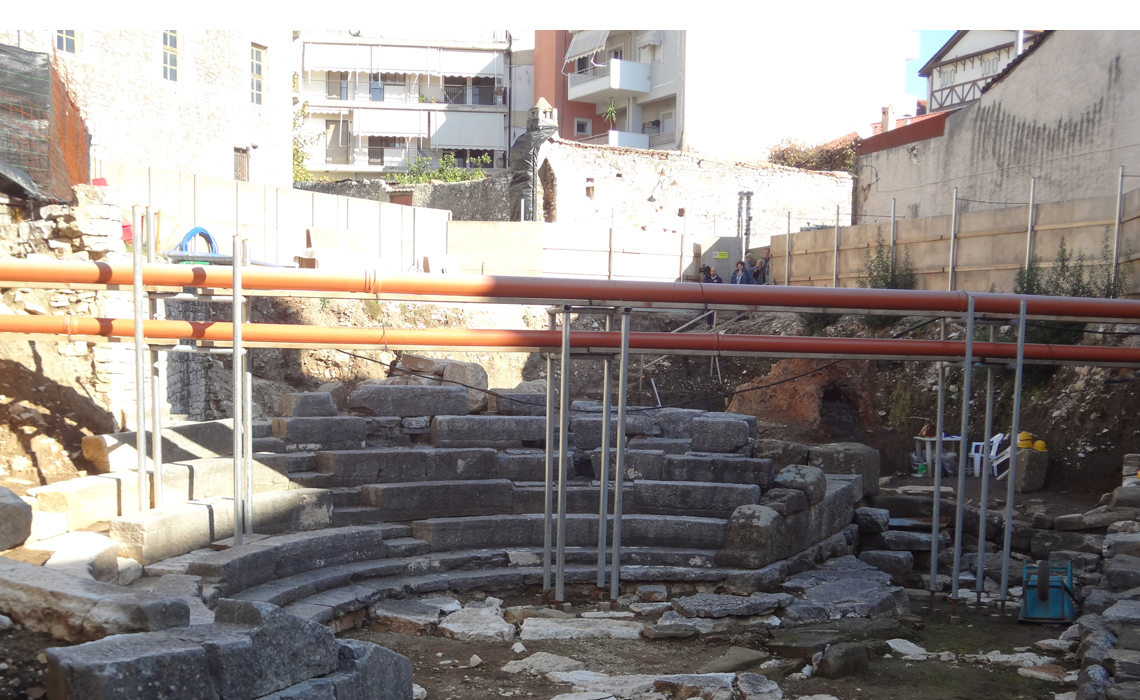
The small theatre of Amvrakia is the smallest of all ancient Greek theatres uncovered to date. It is located at the center of the ancient city, in some distance from the late archaic temple of Apollo. It is dated between the late fourth – early third century BC, during the reign of Pyrhus.
In contrast to most ancient Greek theatres, the small Theater of Amvrakia was not built on a natural incline, but rested on a filled slope. The backfill included older constructions: the foundations of houses dating to the 5thcentury BC and baths dating to the 4th century BC. The floors of the baths, made of small black and white river or sea pebbles depicted dolphins, an Erotideus (young Eros) stretching his hand to a swan, another blowing a conch.
With the passage of time, the small theater of Amvrakia was in turn covered by other buildings, possibly byzantine, ottoman, recent. Excavations uncovered it in 1976. It has since remained visible, a significant memento of the ancient city that has risen from below modern day Arta.
| Name | Date | Amount (€) |
|---|---|---|
| Savvoula Nikolou | 100.00 |